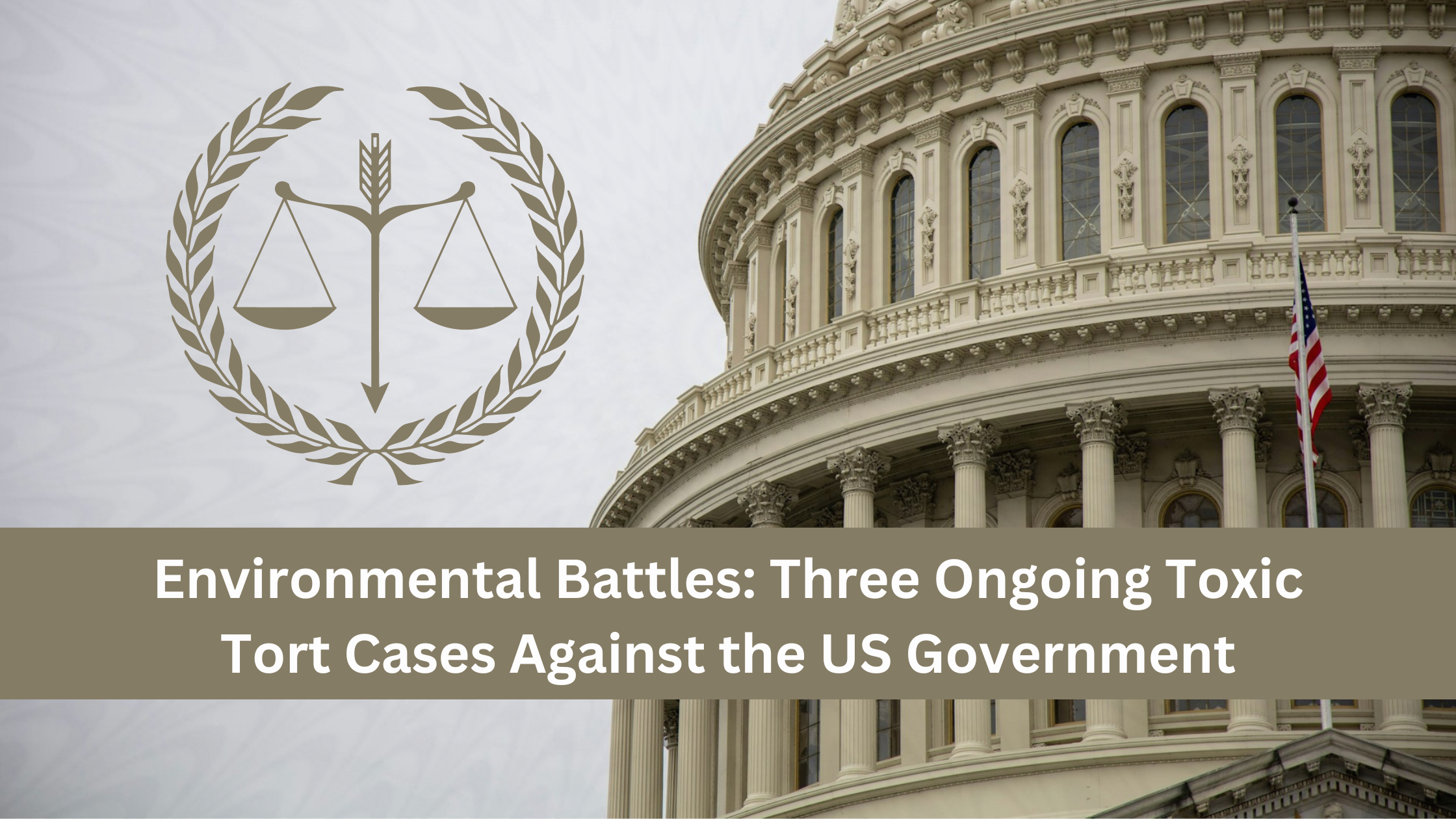Pursuing justice in toxic tort cases against the US government underscores the importance of holding authorities accountable for environmental harm. These legal battles, often protracted and complex, shine a light on the intersection of public health, environmental protection, and governmental responsibility.
Through these cases, plaintiffs seek retribution for damages inflicted upon communities and ecosystems due to alleged negligence or misconduct by federal agencies.
Amidst ongoing disputes, such as those concerning chemical contamination, hazardous waste disposal, and industrial pollution, the outcomes hold significant implications. They affect environmental policy, shaping the trajectory of regulations and enforcement measures.
1. Flint Water Crisis
The Flint water crisis erupted in 2014 when Flint, Michigan, switched its water source to the Flint River. This change led to widespread lead contamination in the drinking water supply.
As a consequence, thousands of residents, including numerous children, were exposed to dangerously elevated levels of lead and other pollutants.
Tragically, during the period between 2014 and 2015, the water supply also became contaminated with Legionella bacteria, leading to a deadly outbreak of Legionnaires’ disease. According to data from the Michigan Department of Health and Human Services, this outbreak claimed the lives of 12 individuals.
Even today, nearly a decade after the crisis began, the repercussions continue to haunt Flint’s predominantly Black community, as reported by ABC News. Many residents continue to grapple with enduring health issues, underscoring the profound and long-lasting impact of the Flint water crisis on the city’s population.
Legal Battle
Numerous legal actions have been initiated against various government bodies, encompassing state and federal entities, such as Michigan and federal agencies. These lawsuits allege negligence, violations of environmental regulations, and a blatant disregard for public health in connection to the Flint water crisis.
According to reports from USA Today, over 90,000 Flint residents and businesses have been represented in class action and individual lawsuits.
CNN reports that former Governor Rick Snyder, among others, has been named as a defendant in these legal proceedings. He is accused of playing a role in the decision to switch Flint’s water source to the contaminated Flint River as a cost-saving measure. Additionally, he faces allegations of efforts to conceal the ensuing crisis.
Plaintiffs in these lawsuits seek compensation for adverse health effects, property devaluation, and emotional distress caused by the tainted water supply.
2. Camp Lejeune Water Contamination
Camp Lejeune, a US Marine Corps base in North Carolina, is central to a prolonged toxic tort case due to contaminated drinking water. From the 1950s through the 1980s, servicemembers, their families, and civilian employees stationed at Camp Lejeune were exposed to high levels of toxic chemicals.
This exposure resulted from improper waste disposal and leakage from on-base facilities, including trichloroethylene (TCE), perchloroethylene (PCE), and benzene, as reported by TorHoerman Law.
Legal Battle
Amidst mounting legal battles, affected individuals and advocacy groups have launched lawsuits against the US government. These lawsuits make accusations of negligence, delayed warnings, and inadequate measures to address exposure to hazardous substances.
These litigations aim to secure compensation for a range of health damages, including cancers, birth defects, and other severe illnesses associated with contaminated water.
Notably, as reported by Reuters, over 117,000 administrative claims await resolution with the US Navy. Additionally, there are more than 1,300 lawsuits in federal courts in North Carolina, according to statements from the Navy and the Department of Justice.
The government’s estimated cost projection, totaling $3.3 trillion for the administrative claims, underscores the scale and complexity of the legal proceedings. As the deadline for filing claims approaches in August 2024, individuals are turning to the best lawyers for the Camp Lejeune lawsuit to seek justice.
3. Navajo Nation Uranium Contamination
The legacy of uranium mining on Navajo Nation lands in the southwestern United States has resulted in severe environmental contamination and health risks for local communities. Over decades, the extraction, processing, and abandonment of uranium mines have led to pollution of water sources, soil, and air. This has contributed to alarming rates of cancer, kidney disease, and other health ailments among residents.
Despite over 500 mines contributing uranium for vital defense endeavors, such as the Manhattan Project in World War II, none have undergone complete remediation. This revelation, reported by ABC News and attributed to the Environmental Protection Agency, underscores a concerning lack of progress.
Legal Battle
Navajo Nation leaders and affected individuals have pursued legal action against the US government and mining companies. They allege violations of tribal sovereignty, environmental laws, and treaties. Lawsuits seek compensation for health damages, environmental remediation, and restoration of tribal lands.
An illustrative case involves the Navajo Nation’s $12.5 million lawsuit against United Nuclear Corp. on behalf of 125 affected families in Arizona and New Mexico. The lawsuit pertains to damages resulting from the release of radioactive water into the Puerco River in July 1979.
The Arizona Republic reports that residents along the river claim they were never warned about the risks posed by radioactive contamination. This raises questions about the adequacy of communication from state environmental agencies regarding water safety.
FAQs
Is it necessary for Camp Lejeune victims to hire a lawyer?
While not mandatory, Camp Lejeune victims benefit from legal representation. Experienced lawyers assist in understanding rights, assessing cases, and gathering evidence. They negotiate, advocate for fair compensation, and ensure victims’ interests are protected throughout the legal process.
What amount is typically awarded as a settlement in Camp Lejeune lawsuits?
No settlements have been finalized, but legal experts anticipate varying compensation for Camp Lejeune water contamination claims. Potential amounts range from $10,000 to over $1,000,000. The final settlement value depends on the unique details and strength of individual cases.
When is the deadline for filing a Camp Lejeune lawsuit?
As reported by Reuters, the deadline for filing claims in Camp Lejeune lawsuits is fast approaching in August 2024.
In conclusion, these ongoing toxic tort cases against the US government underscore the complexities and challenges of seeking justice for environmental harm. From contaminated water to uranium pollution, these legal battles highlight the urgent need for systemic reforms, corporate accountability, and environmental justice.
As these cases unfold, they serve as reminders of the resilience of affected communities. They underscore the imperative of holding governments accountable for their actions and inactions in safeguarding public health and the environment.


